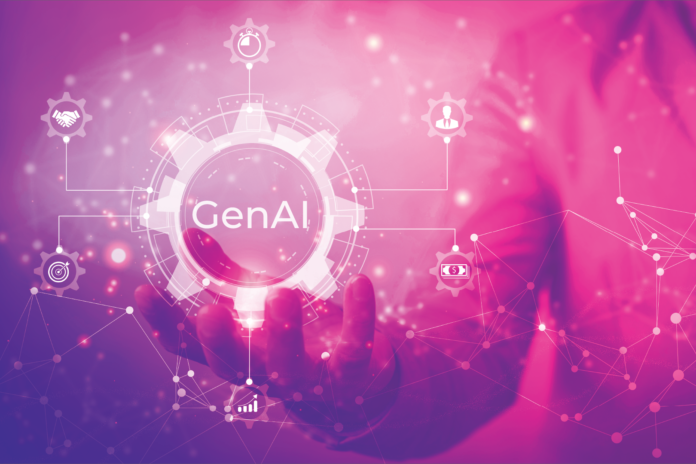Partner content: This technology, capable of generating new content and solutions, has the potential to reshape how telecom companies operate, innovate, and interact with customers
Generative AI (GenAI) is emerging as a transformative force in the rapidly evolving and increasingly complex telecom industry. But, as with all new and emerging technologies, we must be cautious about flippantly combining the old with the new.
The focus, as always, is on bringing genuine value to operators and GenAI is no different. One can easily see the benefits and the limitations of using GenAI in a real-time environment. So, we need to be cautious about where we utilise GenAI in our solutions.
GenAI technologies interpret large amounts of data by tokenising it and storing it in vector databases to aid retrieval and understanding. This method is then obviously not conducive to anomaly detection from real-time streaming. Still, we can use it to analyse anomalies quickly and compare and contrast them with historical events to provide additional insights.
In summary
GenAI is also great at summarising large amounts of text, or in our case, anomalies. So, imagine a Network Operations Centre (NOC) manager sitting at their desk first thing in the morning and asking, “What are the main issues that happened overnight.” What might that look like? How can GenAI assist this NOC manager, and what assistance will work for the other stakeholders?
The AI journey is less about chasing the next shiny goal and more about a disciplined approach to solving real-world problems with a blend of human and machine intelligence. And this is where it gets complicated for telecom operators looking to embrace GenAI.
Thousands of new articles, blog posts and opinions on GenAI are being published daily and searching this haystack for the needles is very time-consuming. So, recently, we did some GenAI media research on your behalf. More specifically, we scoured Q3 2023 media coverage relevant to our industry and produced a high-level set of topics that are key to GenAI conversations and framing at this time.
Let us begin.
The promise vs. the cost
GenAI promises to redefine roles within the telecom industry, facilitating rapid upskilling and enhancing productivity. Some of its key benefits lie in its ability to explain complex outputs and feed this into the automation of complex tasks, fitting into the zero-touch service management way of thinking and generating innovative solutions to complex problems, which can lead to significant efficiency gains.
However, this promise comes with environmental considerations. The vast computational power required for GenAI models contributes to a larger carbon footprint, raising concerns about sustainable development.
Balancing these pros and cons will be crucial for the responsible adoption of GenAI in telecoms. Do you have a team in your organisation looking at these pros and cons?
Regulations
The question of effectively regulating GenAI looms large. Regulations will be essential for ensuring ethical use, safety, and risk mitigation, but they also risk stifling innovation if they are too restrictive. The telecom industry must navigate this delicate balance, advocating for regulations protecting consumers and the environment while allowing sufficient room for technological growth, experimentation, and genuine innovation.
For example, the UK’s recent AI Safety Summit produced an agreement that like-minded governments will test new AI models from 8 top companies for safety purposes. This shows how serious and worried world governments are about unchecked progress in AI.
When implementing GenAI in your network, do you know how all the sensitive data is stored and transmitted?
GenAI growth and implementation
It is vital to identify genuine growth areas for GenAI in telecoms. It is even more critical to derive value from those areas. Value for the telecom operator and value for their customers. These will be the key to understanding its future trajectory.
Bells and whistles are only good at attracting attention. Solid use cases will be required to keep that focus and attention. GenAI is increasingly being proposed for implementation in areas like network management, customer service, and complex data analysis. These trajectories are fuelled by the never-ending drive for more efficient operations and enhanced customer experiences, positioning GenAI as a cornerstone of future telecom operations practices and innovations.
As 5G becomes more widespread and 6G appears on the horizon, the focus on closed-loop operations and autonomous networks is critical. Will GenAI be the solution to the problem of more complex networks?
In with the new, stuck with the old
5G SA is increasingly mentioned in the same breath as AI. The new technologies, architectures and operating practices offer genuine opportunities for GenAI to bring efficiency to this complex domain. A significant challenge, however, lies in modernising legacy technologies, applications, and infrastructure to be AI-friendly.
Many telecom companies grapple with older and legacy systems and technologies that are simply not equipped to derive maximum benefit from AI integration, posing a hurdle in harnessing GenAI’s capabilities. While some telecom companies will shutter older technologies, others may need to retain the services.
Going fully cloud-native across all technologies to take advantage of AI and GenAI is an extraordinarily complex and costly way of dealing with this hurdle. Are there other solutions or better ways of approaching the full-breadth use of GenAI in these scenarios?
Digital transformation support
Many telecom operators have ongoing digital transformation strategies, and the introduction of GenAI can support these. GenAI has already proven itself in customer care and support. This business area is often at the forefront of telecom operators’ digital transformation journeys, with many quick wins and plenty of low-hanging fruit.
Service assurance is a cost centre for telecom operators, and those responsible are under constant pressure to reduce opex. If they are to invest in GenAI soon, they will need to understand the expected return clearly.
An oft-repeated quote fits here: “True innovation lies not in adopting technology for its own sake but in its strategic application to solve real problems.” What problems can GenAI solve in your organisation, and do you have a team in place to understand and validate how you can solve them?
So what’s next?
Integrating GenAI into the telecom industry is not just about embracing cutting-edge technology but strategically leveraging it to address fundamental challenges and opportunities. We are committed to this thoughtful and pragmatic approach at Anritsu Service Assurance. While GenAI offers exciting possibilities in network management, customer service, and data analysis, its successful implementation hinges on balancing innovation with practicality, ethical considerations, and environmental impacts.
The question for telecom operators now is not if GenAI will be a part of their future but how they will strategically implement it to revolutionise their services and operations in a sustainable, responsible, and impactful manner.
About Brian Murray
Brian Murray is the Head of Product Marketing at Anritsu Service Assurance. He has over 12 years’ experience in the telecom industry and has worked for some very recognisable companies such as The NOW Factory, IBM, and Mobileum, where his many roles spanned both product and marketing.

His passion lies in creatively communicating the real value of his product suite to customers while matching it with their needs through a deep understanding of their unique pain points. His dedication to this philosophy has been instrumental in building lasting relationships with customers and positioning Anritsu Service Assurance as a leader in its domain.



